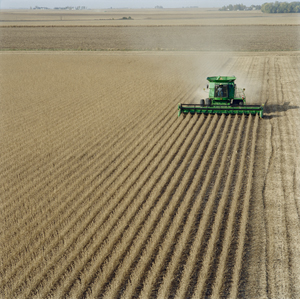Where are land prices headed? They are up everywhere except where dairy cows are found. That's the short answer to a more complicated question.
Farmland prices jumped 10 percent during the third quarter when compared to a year earlier for the portions of five states found in the Seventh Federal Reserve District, reports economist David Oppedahl with the Federal Reserve Bank of Chicago. Compared to the previous quarter, land prices are up 3 percent.

Corn and soybean country led the demand. Farmland values in Iowa were up the most, with a 13 percent jump from the previous year. Indiana, up 11 percent; Michigan, up 10 percent; and Illinois, up 8 percent, also posted substantial gains. Dairy-based Wisconsin was up only 3 percent.
Among the 227 bankers responding to the survey the trend was clear, expectations remain strong for land prices as 48 percent predicted more growth while 49 percent called for stable prices. Their predictions are based on some solid facts as the Seventh Federal Reserve District just posted its third largest corn crop and the second largest soybean crop. High yield and high prices have combined to create even higher demand for land would be the conclusion one could draw from the data.
"Improvements in agricultural credit conditions were reported throughout the District," said Oppedahl when discussing the recently completed third quarter. "Such improvements were somewhat muted for Wisconsin," he noted. "Wisconsin was the only state with a drop in loan repayment rates, although the decrease was much smaller than a year ago," he went on to report. When looking at the entire District, Wisconsin was the only state where the trend in forced sales and liquidations did not reverse from a year ago.
Farmland prices jumped 10 percent during the third quarter when compared to a year earlier for the portions of five states found in the Seventh Federal Reserve District, reports economist David Oppedahl with the Federal Reserve Bank of Chicago. Compared to the previous quarter, land prices are up 3 percent.

Corn and soybean country led the demand. Farmland values in Iowa were up the most, with a 13 percent jump from the previous year. Indiana, up 11 percent; Michigan, up 10 percent; and Illinois, up 8 percent, also posted substantial gains. Dairy-based Wisconsin was up only 3 percent.
Among the 227 bankers responding to the survey the trend was clear, expectations remain strong for land prices as 48 percent predicted more growth while 49 percent called for stable prices. Their predictions are based on some solid facts as the Seventh Federal Reserve District just posted its third largest corn crop and the second largest soybean crop. High yield and high prices have combined to create even higher demand for land would be the conclusion one could draw from the data.
"Improvements in agricultural credit conditions were reported throughout the District," said Oppedahl when discussing the recently completed third quarter. "Such improvements were somewhat muted for Wisconsin," he noted. "Wisconsin was the only state with a drop in loan repayment rates, although the decrease was much smaller than a year ago," he went on to report. When looking at the entire District, Wisconsin was the only state where the trend in forced sales and liquidations did not reverse from a year ago.








